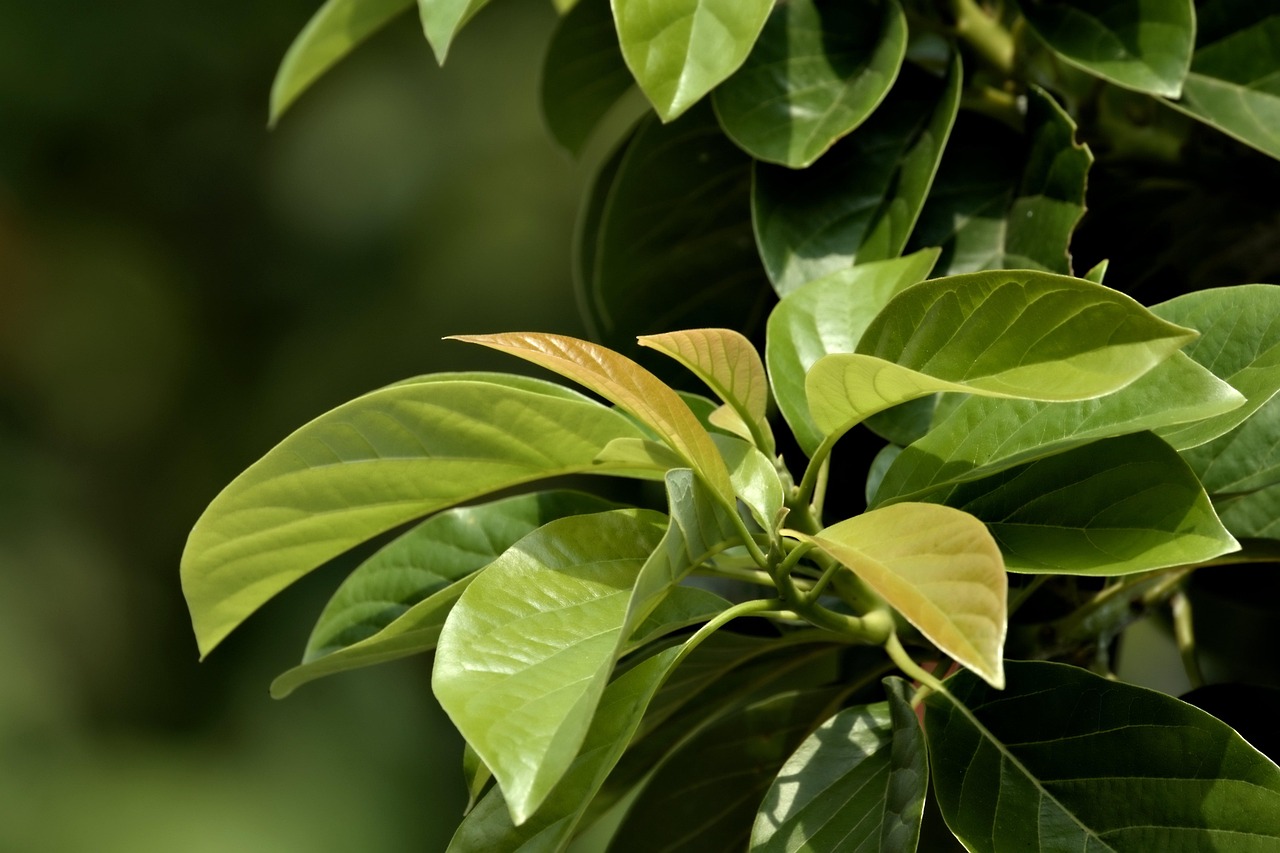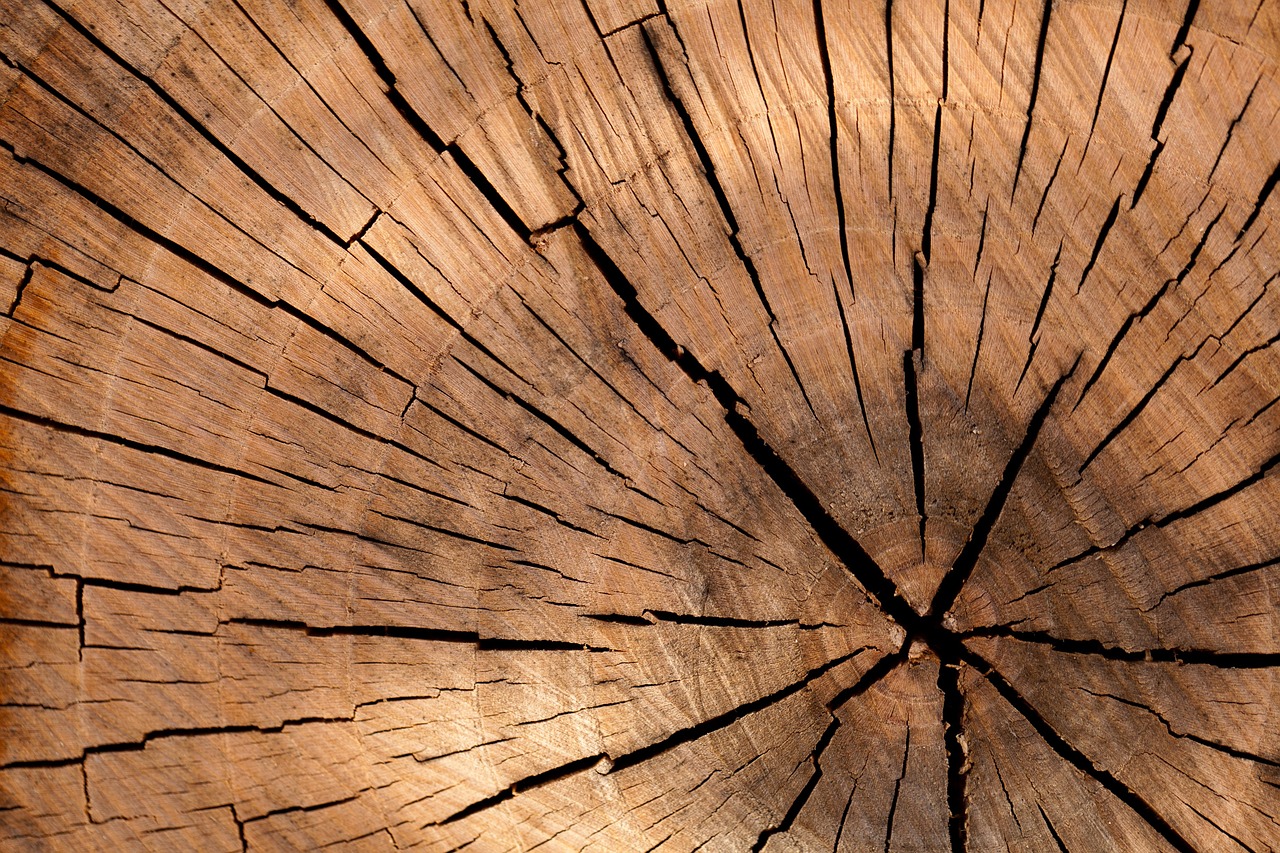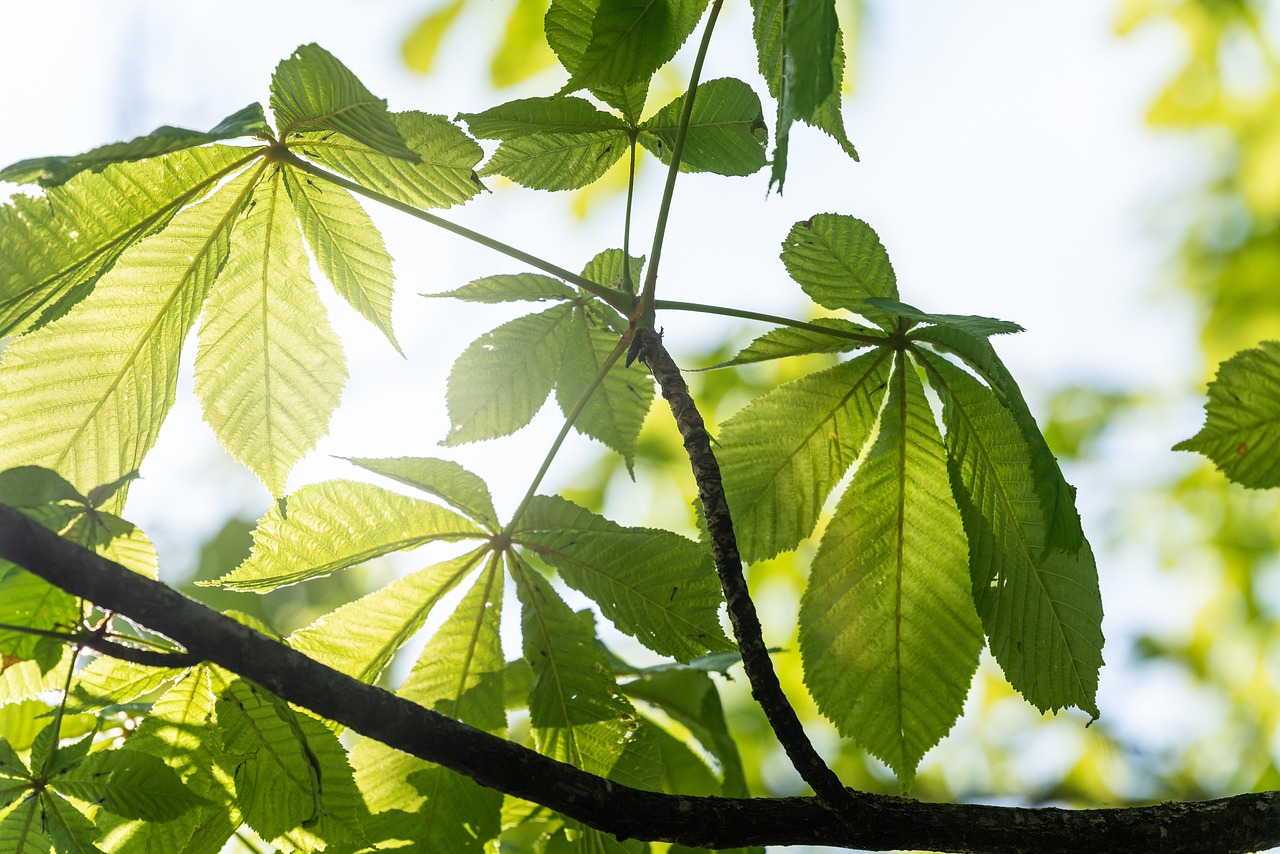The tree diameter growth rate is calculated by measuring the increase in the trunk’s diameter over a specific period. The growth formula typically used is: Growth Rate = (Diameter at Time 2 – Diameter at Time 1) / Time Interval.
Understanding Tree Growth
Tree growth is a vital ecological process. It plays a significant role in carbon sequestration, habitat provision, and overall forest health. Trees grow in various ways, including increases in height, leaf area, and trunk diameter. Among these, the measurement of trunk diameter is crucial as it reflects the tree’s overall health and vigor.

The trunk diameter is often measured at a specific height above the ground, commonly known as Diameter at Breast Height (DBH). This standard measurement helps in assessing the growth of trees consistently across different species and environments. Knowing how to calculate the growth rate of tree diameter can inform forestry management practices, conservation efforts, and ecological studies.
Key Factors Influencing Tree Diameter Growth
Several factors influence the rate at which a tree’s diameter increases. Understanding these factors can help predict growth patterns and make informed decisions regarding tree management. Here are some key factors:
- Species: Different tree species have varying growth rates. Fast-growing species like poplar and willow may exhibit rapid diameter increases compared to slower-growing species like oak and cedar.
- Soil Quality: Nutrient-rich soil supports healthier trees. Trees in poor soil conditions may struggle to grow.
- Water Availability: Adequate moisture is essential for growth. Drought conditions can slow down or even halt diameter growth.
- Climate: Temperature and sunlight directly affect photosynthesis. Trees in optimal climates will generally grow faster.
- Pests and Diseases: Infestations can hinder growth by damaging the tree’s health and structural integrity.
Measuring Tree Diameter
To accurately measure a tree’s diameter, follow these steps:

- Identify the measurement point, typically 4.5 feet above the ground for DBH.
- Use a diameter tape or caliper to measure the circumference of the tree at this height.
- If using a tape, divide the circumference by pi (approximately 3.14) to find the diameter.
This method provides a clear understanding of how much the trunk has grown over time. Regular measurements can help track growth rates effectively.
Calculating Growth Rate
Once you have two measurements of trunk diameter taken at different times, you can calculate the growth rate. The formula for calculating the growth rate is straightforward:
| Measurement | Time 1 (Year) | Time 2 (Year) | Diameter (inches) |
|---|---|---|---|
| Initial Diameter | 2020 | 10 | |
| Final Diameter | 2023 | 12 |
Using the data from the table above, you would perform the following calculation:

Growth Rate = (Diameter at Time 2 – Diameter at Time 1) / Time Interval
This means:
Growth Rate = (12 inches – 10 inches) / (2023 – 2020) = 2 inches / 3 years = 0.67 inches per year

This formula provides a clear metric for understanding how quickly a tree is growing in terms of trunk diameter.
Tracking these metrics over time can also assist in making decisions regarding thinning practices in forestry and managing wood production sustainably. Overall, understanding tree diameter growth rates is essential for anyone involved in forestry management or ecological research.
Factors Affecting Tree Diameter Growth Rate
Understanding the factors that affect the diameter growth rate of trees is essential for accurate assessment and management. Various environmental, biological, and anthropogenic factors can influence how quickly a tree grows. Below are some key elements that play a significant role in determining tree diameter growth rates:
Environmental Factors
Environmental conditions encompass a range of elements that affect tree growth. These include:
- Soil Type: Different soil types provide varying levels of nutrients and drainage. Sandy soils may drain quickly but hold less moisture, while clay soils retain water but can become compacted.
- Water Availability: Consistent access to water is crucial. Trees in areas with regular rainfall often demonstrate better growth rates than those in arid regions.
- Light Conditions: Sunlight is vital for photosynthesis. Trees growing in shaded areas may experience slower growth compared to those receiving full sunlight.
- Temperature: Optimal temperature ranges differ among species. Extreme temperatures, whether hot or cold, can hinder growth.
Biological Factors
Biological factors include characteristics inherent to the tree species and its health:
- Species Genetics: Some species are genetically predisposed to grow faster. For example, fast-growing species like hybrid poplars can significantly outpace slower-growing species.
- Aging: Young trees tend to grow faster than older ones. As trees mature, their growth rate typically slows down.
- Pests and Diseases: Infestations can negatively impact a tree’s health, leading to reduced growth rates. Regular monitoring and management are essential.
Anthropogenic Factors
Human activities also significantly influence tree growth rates. Here are some examples:
- Land Use Changes: Urbanization or agricultural development can impact the availability of resources, such as water and nutrients.
- Disease Management: Implementing pest control measures can help maintain healthy trees, promoting better diameter growth.
- Forest Management Practices: Practices like thinning and controlled burns can improve growth rates by reducing competition for resources.
Growth Models for Trees
To predict and analyze tree diameter growth rates, several growth models have been developed. These models can help forest managers and researchers understand growth dynamics over time. Here are some commonly used models:
Cohen’s Growth Model
This model provides a simplified approach to estimating tree diameter growth based on age and initial diameter. It is particularly useful for young trees in even-aged stands.
Logistic Growth Model
The logistic model accounts for the carrying capacity of the environment. As trees grow, competition for resources increases, leading to a slowdown in growth as they approach their maximum size.
Exponential Growth Model
This model assumes that growth is proportional to the current diameter. It is most applicable during the early stages of growth when resources are abundant and competition is low.
| Growth Model | Description | Best Used For |
|---|---|---|
| Cohen’s Model | Simplified estimation based on age and initial diameter. | Young trees in even-aged stands. |
| Logistic Model | Considers carrying capacity and resource competition. | Mature trees nearing maximum size. |
| Exponential Model | Growth proportional to current diameter. | Early stages of growth with abundant resources. |
The Importance of Monitoring Growth Rates
Monitoring tree diameter growth rates is crucial for several reasons. It helps forestry professionals manage tree populations effectively, ensuring sustainable practices that align with environmental conservation goals.
Regularly tracking growth allows for:
- Predicting Timber Yield: Understanding expected growth rates assists in estimating future timber yields for commercial forestry operations.
- Assessing Forest Health: Tracking growth can help identify stressed or declining trees, enabling timely interventions.
- Guiding Reforestation Efforts: Knowing which species grow best in specific conditions aids in selecting appropriate species for planting.
The importance of accurately measuring and calculating tree diameter growth rates cannot be overstated. By integrating this knowledge into forest management practices, we can promote healthier ecosystems and sustainable resource use.
Tools and Techniques for Measuring Tree Diameter
Accurate measurement of tree diameter is essential for calculating growth rates effectively. Various tools and techniques are available to help forestry professionals and researchers obtain precise measurements. Here are some commonly used methods:
Diameter Tape
A diameter tape is a specialized tool designed to measure the circumference of a tree at DBH. This tape is marked with diameter measurements, allowing users to read the diameter directly from the tape without needing to perform calculations.
Calipers
Calipers, both manual and digital, provide another option for measuring tree diameter. They can be used to measure the diameter directly by placing the jaws around the trunk. For more accurate readings, calipers can be adjusted to measure at the standard height of 4.5 feet.
Measuring Wheel
A measuring wheel can be utilized to calculate the circumference if no specialized tape or calipers are available. Once the circumference is measured, the diameter can be calculated using the formula:
Diameter = Circumference / π
Remote Sensing Technology
Advancements in technology have introduced remote sensing methods for measuring tree dimensions. LiDAR (Light Detection and Ranging) can create detailed 3D representations of forest structure, allowing for accurate diameter estimations without direct contact with the trees.
Growth Rate Calculations Over Time
Calculating tree diameter growth rates over different time intervals provides insight into growth trends. It is important to consider both short-term and long-term growth patterns.
Short-Term Growth Rate Calculation
To calculate short-term growth rates, measurements taken over a few years can highlight immediate changes. This approach is useful for assessing the impact of specific management practices or environmental changes.
- Record the initial diameter measurement at Year 1.
- Take a new measurement at Year 2.
- Apply the growth rate formula:
Growth Rate = (Diameter at Year 2 – Diameter at Year 1) / (Year 2 – Year 1)
Long-Term Growth Rate Calculation
Long-term growth rate calculations consider data collected over several years or decades. This helps in understanding overall trends and patterns in tree growth.
- Collect diameter measurements at regular intervals (e.g., every 5 years).
- Use the same formula as before, but apply it between the initial and final measurements.
This approach provides a more comprehensive view of growth trends and can be particularly useful for assessing the impact of climatic changes or forest management strategies over time.
Data Analysis and Interpretation
Once growth rates are calculated, analyzing and interpreting the data is crucial for informed decision-making. Here are some key steps involved in this process:
Data Visualization
Graphing growth data can help visualize trends over time. Common methods include:
- Line Graphs: Useful for showing growth trends across multiple years.
- Bar Charts: Effective for comparing growth rates among different species or locations.
Statistical Analysis
Applying statistical methods can help validate findings and establish significance. Common techniques include:
- T-tests: Used to compare mean growth rates between two groups.
- ANOVA: Useful for comparing means across multiple groups or treatments.
Growth Rate Predictions
With established growth rates and statistical analysis, predictions regarding future growth can be made. This is especially valuable in forest management for planning timber harvests or evaluating ecological restoration efforts. Growth models can be refined based on historical data, increasing accuracy in forecasting growth trends.
The Role of Tree Diameter Growth in Ecosystem Health
The diameter growth of trees is not only important for timber production but also plays a significant role in ecosystem health. Healthy trees contribute to biodiversity and provide various ecosystem services:
- Carbon Sequestration: Larger trees store more carbon, helping mitigate climate change.
- Soil Erosion Prevention: Trees with larger diameters have extensive root systems that help anchor soil and prevent erosion.
- Biodiversity Support: Mature trees create habitats for numerous species, enhancing overall ecosystem diversity.
Monitoring tree diameter growth rates aids in understanding these ecological contributions, emphasizing the need for sustainable forestry practices and conservation efforts.
The information derived from measuring and interpreting tree diameter growth rates ultimately supports healthier forests and robust ecosystems, reinforcing the interconnectedness of tree growth with environmental health and sustainability.
Future Directions in Tree Diameter Growth Research
As the understanding of tree diameter growth rates continues to evolve, several future directions can enhance research and application in forestry management. Advancements in technology and methodologies will likely play a pivotal role in this evolution.
Integration of Big Data and Remote Sensing
The integration of big data analytics with remote sensing technology holds great promise for improving the accuracy of tree growth measurements. By utilizing satellite imagery and drones, researchers can gather extensive data on forest health and growth patterns.
This data can be analyzed to identify trends over large areas, allowing for:
- Enhanced Monitoring: Continuous monitoring of tree growth in various ecosystems can provide insights into how trees respond to environmental changes.
- Predictive Modeling: More accurate predictive models can be developed to forecast growth trends based on historical data and current conditions.
- Comprehensive Assessments: Combining data from different sources can lead to more robust assessments of forest health and productivity.
Climate Change Adaptation Strategies
As climate change poses new challenges to forestry, understanding tree diameter growth rates becomes increasingly important. Research should focus on how different species adapt to changing climatic conditions. This includes:
- Species Resilience: Identifying which species exhibit greater resilience to extreme weather events, such as droughts or heavy storms.
- Growth Rate Variability: Studying how growth rates may change under different climate scenarios can help in planning reforestation efforts.
- Genetic Studies: Investigating the genetic basis of growth traits could inform breeding programs aimed at enhancing tree resilience to climate change.
Sustainable Forestry Practices
Implementing sustainable forestry practices will depend on continuous research into tree diameter growth rates. Effective practices can be developed by understanding growth dynamics better. Key areas for focus include:
- Thinning Techniques: Research on optimal thinning strategies can maximize growth rates while maintaining forest health.
- Mixed-Species Plantations: Understanding how different species interact and affect each other’s growth can lead to more productive ecosystems.
- Soil Management: Investigating soil health and its impact on tree growth is crucial for sustaining forest productivity.
Final Thoughts
The measurement and analysis of tree diameter growth rates offer valuable insights into the health and productivity of forests. By understanding the factors influencing growth and employing effective measurement techniques, forestry professionals can make informed decisions that benefit both the environment and the economy.
The interconnectedness of tree diameter growth with broader ecological systems highlights the importance of maintaining healthy forests. Sustainable practices not only support timber production but also enhance biodiversity, improve air quality, and contribute to climate stability.
As research progresses, the integration of new technologies and methodologies will further enrich our understanding of tree growth dynamics. By prioritizing sustainable forestry management and conservation efforts, we can ensure that forests remain resilient in the face of environmental challenges, thus securing their benefits for future generations.
Ultimately, the comprehensive understanding of tree diameter growth rates serves as a crucial component in fostering a sustainable relationship between human activities and the natural world. It is imperative that stakeholders continue to collaborate in advancing research, sharing knowledge, and implementing effective practices that promote forest health and sustainability.
